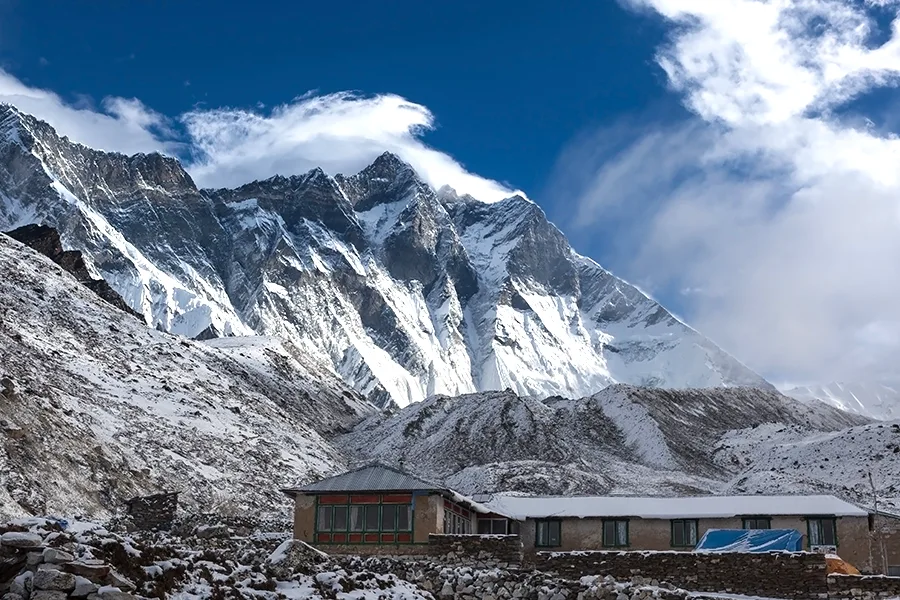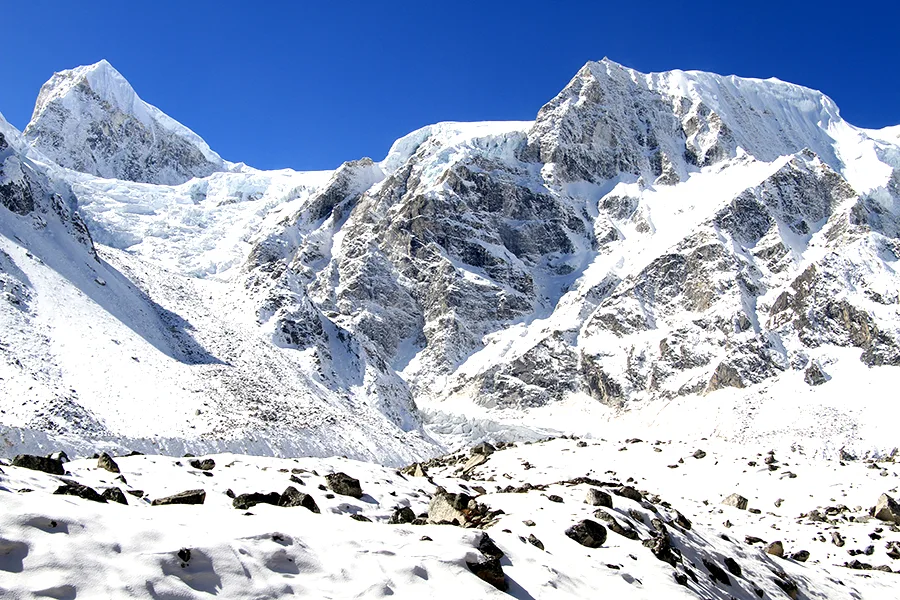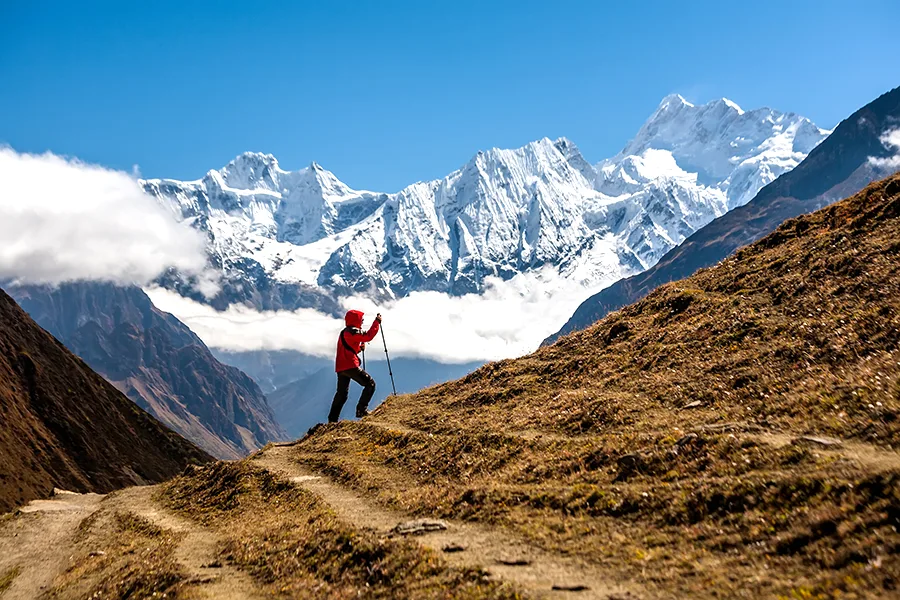Top 10 Tallest Mountains in Nepal: Himalayan Gaints
Nepal boasts some of the top tallest mountains in the world. These tallest mountains in Nepal are famous for their awe-inspiring greatness and roughness. Among them, 10 summits are the tallest mountains in Nepal, every mesmerizing in its own way and inviting mountaineers and nature fans alike.
Nepal holds different part of the Himalayas, the best mountain range in the world. Eight of the fourteen tallest mountains in the world are situated in Nepal, both in complete or shared throughout a border within China or India. Nepal has the highest mountain in the world, Mount Everest.
Exploring these 10 tallest mountains in Nepal is not only a fun task, but also climbers have to face harsh conditions and severe altitudes, checking out their physical and intellectual energy at each step. Yet, for the individuals who dare to venture into the chill air of the Himalayas, this trekking opportunity is extraordinary.
Whether you are a skilled mountain climber or a real hiker of the majesty of nature, the tallest mountains in Nepal offer a supreme revel to leave you in awe of the character and majesty of the splendor of our planet.
| S.N. | Name of Mountain | Height (m) | Height (ft) | Location |
| 1. | Mount Everest | 8,848.86 | 29,032 | Khumbu Mahalangur |
| 2. | Kanchenjunga | 8,586 | 28,169 | Northern Kanchenjunga |
| 3. | Lhotse | 8,516 | 27,940 | Everest Group |
| 4. | Makalu | 8,481 | 27,824 | Makalu Mahalangur |
| 5. | Cho Oyu | 8,188 | 26,864 | Khumbu Mahalangur |
| 6. | Dhaulagiri I | 8,167 | 26,795 | Dhaulagiri |
| 7. | Manaslu | 8,163 | 26,781 | Mansiri |
| 8. | Annapurna I | 8,091 | 26,545 | Annapurna |
| 9. | Gyachung Kang | 7,952 | 26,089 | Khumbu Mahalangur |
| 10. | Annapurna II | 7,937 | 26,040 | Annapurna |
Top 10 Tallest Mountains in Nepal and its Unique Specialty
Nepal has a number of the tallest mountains in the world, touching the enduring beauty of the clouds. These tallest mountains in Nepal aren’t simply eye-catching but moreover have particular cultural and religious importance for the Nepali people.
Its time to explore the top 10 tallest mountains in Nepal with their significance for the Nepali residents.
1. Mount Everest (8,848 m): Highest Peak in the World
Altitude: 8,848 m (29,029 ft)
Place: Khumbu Region
Coordinates: 27°59′17′′N 86°55′31′′E
Best seasons to climb: April, May
Mount Everest is the tallest mountain in the world, placed among Nepal and Tibet in China. It is a huge mountain with an altitude of approximately 8,848 meters. Everest has a completely unique pyramid form that sets it aside. Its southern part is the strongest and most exposed, and the most severe weather.

The mountain runs along the South Col to the south and the North Col to the north and joins the neighboring mountain ranges. To the east, Kangshung is surrounded by large glaciers. The climate is very unpredictable on the top of Everest, as in other parts of the mountains of Nepal.
There are sturdy winds of approximately fifty-five meters per second and freezing temperatures that can drop down to -60 degrees Celsius. Despite these risks, Everest gained the attention of many trekkers who are attracted by its beauty and undertaking. It is seen as a symbol of human achievement and research spirit.
2. Kanchanjunga (8,586 m): Third Highest Peak in the World
Altitude: 8,586 m (28,169 ft)
Place: Taplejung District
Coordinates: 27°42′20′′N 88°09′28′′E
Best seasons to climb: April, May
In Nepal’s Taplejung region stands Mount Kanchenjunga, Nepal’s second highest and the third highest in the world at 8,586 meters (28,169 feet) It is called the “Five Snow Treasures” because it has five peaks, making it very impressive.
Joe Brown and George Band climbed it in 1955 and became famous climbers. Though Kanchenjung became formerly one of the tallest mountains in the world, it lost that identity in 1856.
Despite its elevation and significance, Kanchenjunga remains a mystery because of the reality that now not many human beings have explored it because of its challenging dangers. However, in 2000, it’s been inaccessible from Sikkim, adding to the thriller of the mountain. Only the brave and the dear ones come here to reveal their secrets.
3. Mount Lhotse (8,516 m): Fourth Highest Peak in the World
Altitude: 8,516 m (27,940 ft)
Place: Khumbu Region
Coordinates: 27°57′46′′N 86°56′00′′E
Best seasons to climb: April, May, September, October
Lhotse is one of the tallest mountains in Nepal situated on the border of Nepal and China. This mountain is popular for its majestic height and beauty. It consists of three tallest mountains in Nepal, with elevations ranging from 8,300 to 8,500 meters.
Lhotse is intricately connected to Mount Everest via the South Col Pass, which stands at around 7,500 meters high. A portion of Lhotse falls within Sagarmatha National Park, adding to its allure. If you want to explore the impressive views of the tallest mountains of Nepal, you can go ahead to the summit of Chukhung-ri.

From the summit of Chukung-ri, you can enjoy the view of Lhotse and its neighboring peaks. Whether it’s the sheer slopes or the snow-capped summits, Lhotse offers awe-inspiring beauty and natural splendor, leaving a lasting impression on all. It symbolizes an incredible altitude that can be reached with patience, courage, and a deep respect for the natural world.
Lhotse is one of the highest peaks in Nepal, status proud of the majestic Himalayas. Generally overshadowed with the aid of its greater famous neighbor, Mount Everest, Lhotse holds its speciality as the fourth highest mountain on Earth. Rising to a mind-blowing 8,516 meters (27,940 feet), Lhotse’s towering presence amazes and fascinates all viewers.
The term “Lhotse” means “Southern Peak” in Tibetan, efficiently indicating its south of Mount Everest. The mountain is a part of the Everest area, and he stocks his camp with climbers before turning on his personal particular course.
4. Makalu (8,481 m): Rugged Tallest Mountain in Nepal
Altitude: 8,481 m (27,824.8 ft)
Place: Khumbu Region
Coordinates: 27°53′13′′N 87°05′27′′E
Best seasons to climb: April, May
Makalu is one of the rugged tallest mountains in Nepal, no longer very far way from Mount Everest. Its rugged terrain and awe-inspiring scenery appeal to adventure fans. But climbing Makalu is really hard and dangerous, and most attempts end in failure.

About 70% of climbers who attempt to place the foot on the summit fail. Until the mid-twentieth century, little attention was given to Makalu. The high peaks were a concern of great interest to scientists and climbers, so Makalu remained obscure for a long time.
While difficult to climb, Makalu is really beautiful and rich in history. As more people try to conquer it, the mountain grows in popularity and attracts hikers who want to challenge themselves.
Despite the challenges, Makalu is a crucial part of Nepal’s mountain range, calling out to people who are courageous and determined to explore it.
5. Cho Oyu (8,188 m): The Turquoise Goddess
Altitude: 8,188 m (26,864 ft)
Place: Khumbu Region
Coordinates: 28°6′48′′N 86°39′30′′E
Best seasons to climb: August, September, October
In 1954, Joseph Jochler, Herbert Tichy, and Sherpa Pasang Dawa Lama were the first people to summit Cho Oyu. Unlike Mount Everest, many climbers do not attempt to climb Cho Oyu from the Nepalese side.
Most prefer the routes from western Tibet because they are less difficult. Despite not being as famous as Everest, Cho Oyu remains a popular destination for climbers looking for adventure and scenery.

Cho Oyu is one of the tallest mountains in Nepal, status proudly within the powerful Himalayas. Cho Oyu has its campsite with Everest climbers however offers a notably easy direction to the summit.
It symbolizes the relentless spirit of human seek and the splendid power of nature. Cho Oyu invitations travelers for an unforgettable adventure to this mountain, in which wonders of the world may be visible in a truly exciting way.
It is the sixth world’s top tallest mountain, with an altitude of 8,188 meters. We all know that this is not as famous as Mount Everest, Cho Oyu is p in its majesty and greatness.
6. Dhaulagiri I (8,167 m): The White Mountain
Altitude: 8,167 m (26,795 ft)
Place: Annapurna Region
Coordinates: 28°43′34′′N 83°29′0′′E
Best seasons to climb: April, May

Dhaulagiri is a challenging mountain for climbers as it is made of limestone and covered with snow, thus popular with the name “white mountain” in Nepali. Every year it grows a little higher, sometimes showing that it is one of the tallest mountains in Nepal.
Despite being only 8,167 meters high, it has been difficult to climb. But people are drawn not only for its height but also for its eye-catching beauty. Dhaulagiri was once thought to be the highest peak but after some research, this myth was rejected.
But its beauty remains unmatched. It emphasizes its importance in exhibiting Nepal’s magnificent terrain and invites the traveler to admire its majestic “white mountains”.
7. Mount Manaslu (8,156 meters): The Mountain of the Spirit
Altitude: 8,156 meters (26,781 ft)
Place: Gorkha, Part of the Mansiri Himalayan range
Coordinates: 28°33′28′′N 84°33′55′′E
Best seasons to climb: April, May
Manaslu isn’t just a mountain – it symbolizes resilience, strength, and the iconic spirit of human quest. Even though Mount Manaslu is spectacular, compared to other famous places, few people go hiking there.

That’s mainly because it was opened for trekking in 1991. In 1956, climbers Artur Hajjar, Gyaljen Norbu, and Toshio Imanishi reached the summit for the first time, making mountain history. Mount Manaslu is surrounded by other notable peaks such as Ngadi Chuli, Himal Chuli, and Baudha.
Larkya La Glacier Pond, at 5,106 meters north, adds to the beauty of the area, giving trekkers breathtaking views of the Himalayas Manaslu gained its fame as a brilliant wonder. The term “Manasalu” is “Mountain of Spirit”, and reflects the non secular significance of the mountain.
It is referred to as a sacred location and holds a valuable space in the hearts of people.
Climbing Mount Manaslu is a tough however worthwhile experience. The mountain has many hurdles which includes steep slopes, snow cowl, and unpredictable climate.
But for those who dare to accept the challenge, achieving the summit gives amazing scenery of the encompassing Himalayas and a enjoy of accomplishment like no other mountains can offer.
8. Annapurna I (8,091 m): The Goddess of the Harvest
Altitude: 8,091 m (26,545 ft)
Place: Annapurna Region
Coordinates: 28°35′34′′N 83°49′7′′E
Best seasons to climb: April, May
Standing just over 8,000 meters high, Annapurna holds the uniqueness of being one of the first mountains climbed by humans. Its steep slopes offer a formidable challenge, with a climber mortality rate of 19%. In 1950, the French climbers realized they could not reach Dhaulagiri and redirected their efforts to Annapurna.
Once explored, they set out to conquer its treacherous mountains. Following a massive earthquake in the mountains of Nepal in 2015, a modest uplift of 25 cm highlighted the dynamics of the region’s landscape as a resilient population of the Annapurna highlands and a symbol of ceaseless struggle and forces of nature.

Annapurna offers a powerful challenge for climbers, with steep faces, risky snowfall, and unpredictable weather. Its steep slopes and snow-covered terrain require good physique, patience, and endurability from the trekkers who intend to climb.
Many climbers keep in mind that Annapurna is one of the most technically challenging mountains to climb in the world, no matter the demanding situations that challenge even the most experienced climbers, conquering Annapurna gives a thrilling reward.
9. Gyachung Kang (7,952 m): The Enigmatic Peak
Altitude: 7,952 m (26,089 ft)
Place: Khumbu Region
Coordinates: 28°05′53″N 86°44′32″E
Best season to climb: April, May
Gyachung Kang is the 15th highest mountain in the world and the tallest of the mountains that are not part of the famous “eight thousand“. It is located on the border of Nepal and China, in the Mahalangur Himalayas, between Cho Oyu and Everest.
In 1964, mountaineers Y. Kato, K. Sakaizawa, and Pasang Futar made history by climbing Gyachungkang for the first time. Despite its spectacular and expensive climbing expenses, Gyachung Kong is not as well known as its larger neighbor.
But its steep slopes and immersing scenery appeal to hikers looking for new challenges in high-altitude climbing. The camp in Gyachung Kang is a hub of interest, filled with climbers from everywhere in the international community who come to test their skills and push their limits.
Despite its wildly famous recognition, the climbing routes in Gyachung Kang are considered less crowded than Everest, offering a completely unique experience for adventurers.
10. Annapurna II (7,937 m): Second-tallest mountain within the Annapurna range
Altitude: 7,937 m (26,040 ft)
Place: Annapurna Region
Coordinates: 28°32′9″N 84°7′17″E
Best seasons to climb: April, May, September
Annapurna II is the second-tallest mountain within the Annapurna range, at 7,937 meters (26,040 feet). An organization of climbers from Britain, India, and Nepal first reached the top in 1960. Moreover, this is one of the greatest accomplishments in mountain history.
Since then, only some mountaineers have reached the summit, which reveals the secret of how difficult this is to climb. The mountain is known for its steep and rugged terrain, making it quite a mission for even the most skilled hikers. Weather conditions consisting of high winds and snow make hiking extra tough.
Because of all these challenges, many people can’t step on the summit. Despite its harshness, Annapurna II continues to be prominent for its splendor and attracts travelers who are determined for the mission.
The Final Wrap Up
These tallest mountains in Nepal fascinate trekkers, climbers and hikers from all over the world, who need to experience the awesome allure of the Himalayas. The tallest mountains of Nepal not only offer thrilling adventures to discover the Sherpa culture and their rich traditions but also call to explore the speciality of rugged lands and warm hospitality.
Since tallest mountains in Nepal play an important role in the natural splendor, influence the chill weather, are a hub of wildlife species, and provide millions of people with a living environment. Therefore, they stand as icons of nature’s power and resilience and remind us of the awesomeness of our motherland.
Nepal is one of the well-known must-see places because of its eight highest peaks in the world. People from different arenas come to Nepal seeking for the natural splendor tucked in those awe-inspiring mountains.
The mountains of Nepal are a combination of peaks and tall giants that call for admiration. Whether you’re simply here to explore Nepal’s Himalayas or making plans for a longer trekking experience, the stunning tallest mountains in Nepal offer.
Nepal has many routes and locations to explore that allow vacationers to go on various adventures. Keep an eye out for our upcoming posts, in which we can explore a few thrilling routes and locations that showcase the unparalleled splendor of Nepal’s mountains.
Every mountain has an intriguing story, where great nature meets human courage and curiosity. It is a journey through the specialty and uniqueness of the tallest mountains in Nepal.







